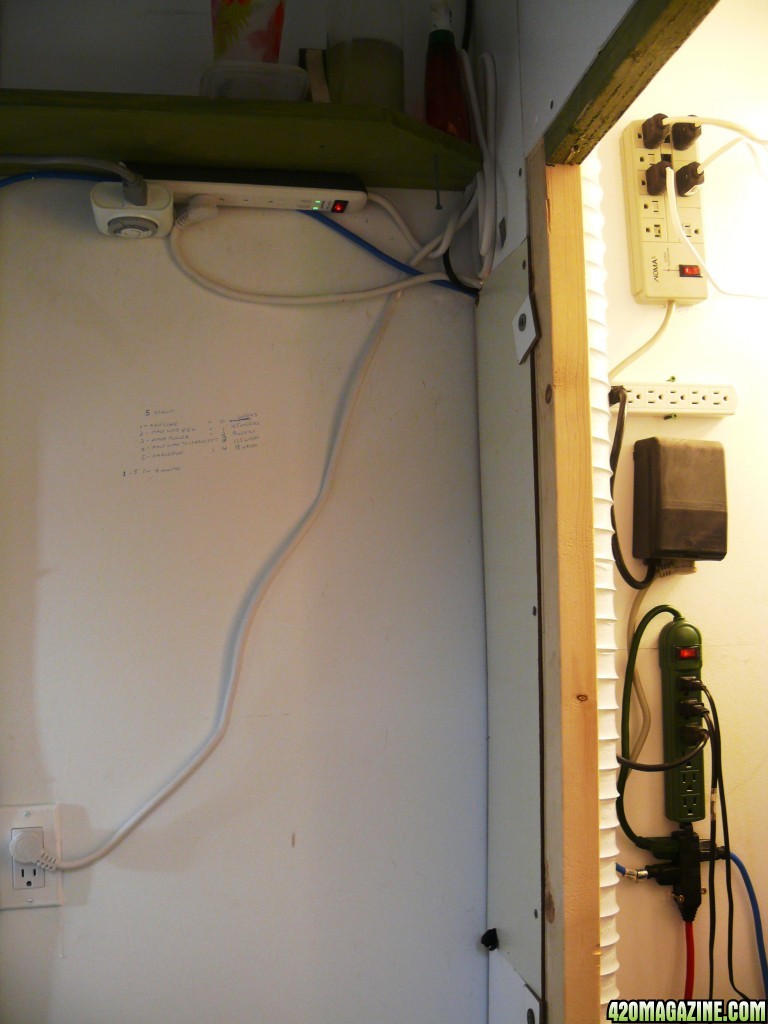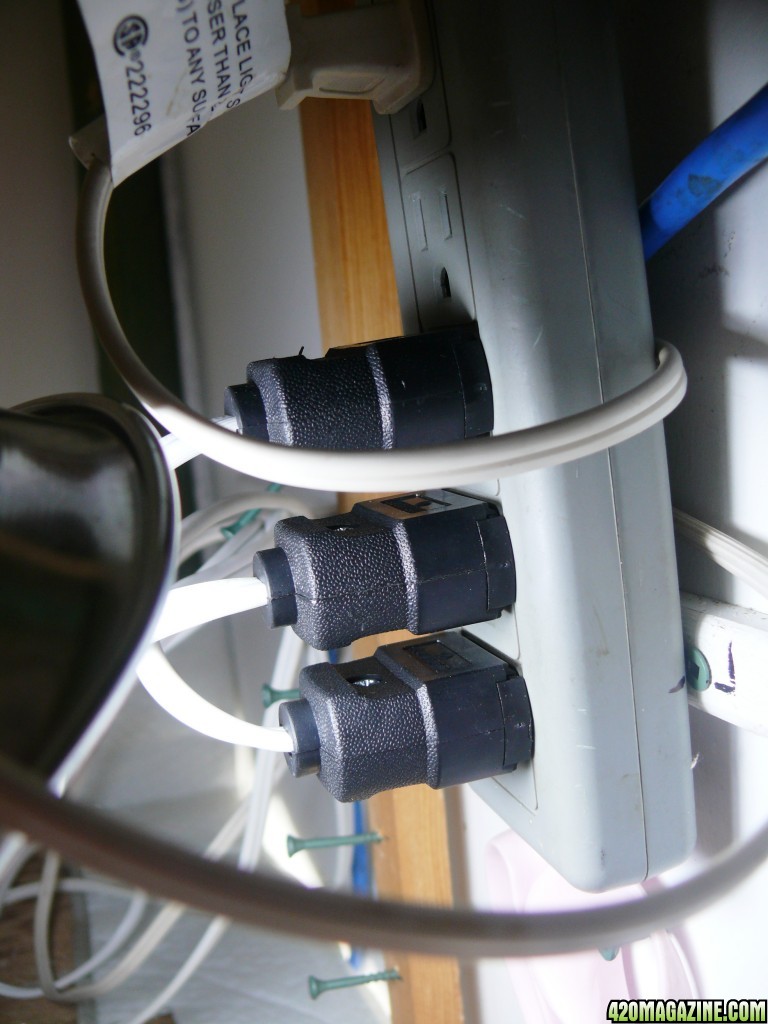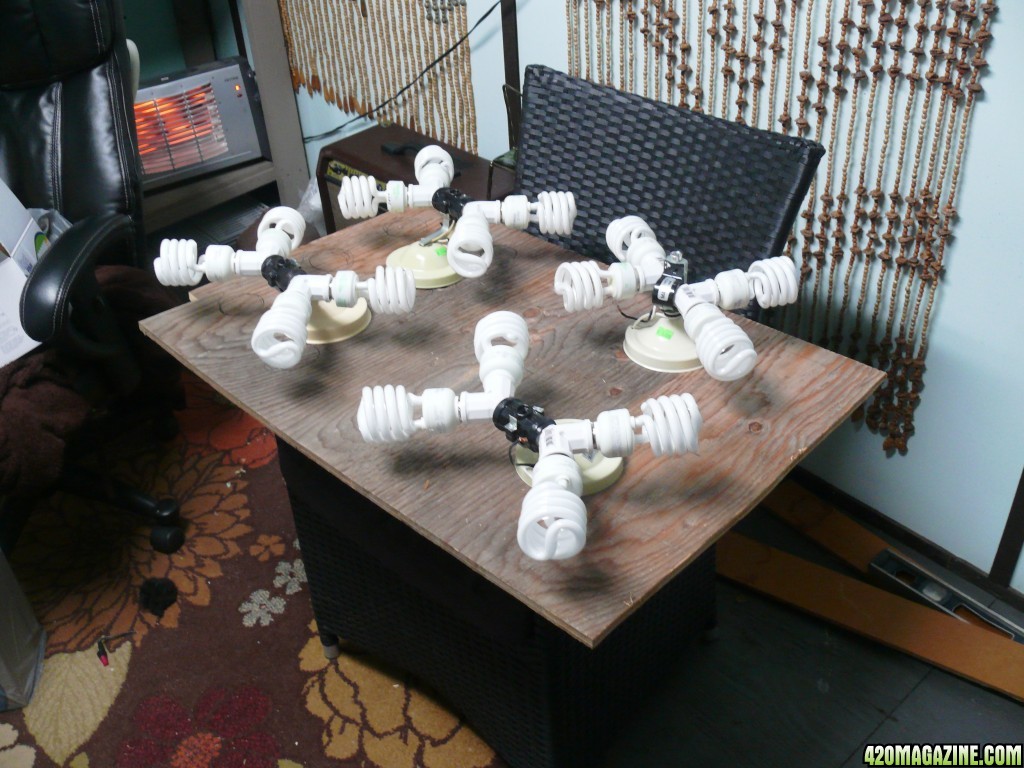i wonder whom might have input regarding electrical safety in our grow lab operations?
i, for one, am a heavy DIY fella, maybe i just like to see how efficiently and economically i can build a project, maybe i am frugal as all get out, or maybe i am one cheap cheapskate. whichever one i am, i still do not intentionally want to electrocute, poison myself, set my house or the neighbours house on fire or bring any attention to my lab at all, ever.
so i collect my supplies, used as much as possible and 'fit' and 'manipulate' the materials until they do what i require.
it's maybe important to mention i have handy man skills, but no more than the absolute basic electrical knowledge. i.e. i could hook up an electrical outlet maybe.
i also must say that i am a true rookie to all this indoor growing stuff and i am presently renovating my grow lab flower side, and as i renovate, and add lights, lots of lights, i have issues like heat and humidity that must be dealt with as well, which is more things to 'plug in', which got me thinking about safety and asking the 420 community their thoughts. i know there are a plethora of issues i have not come across, yet.
one can only imagine the possibly not so handy man attempts made to cultivate the beautiful weed. in the tiniest spaces, with the worst possible equipment. one would be foolish to think it is not happening,, maybe in your neighbours apartment or house.
so, using my 'logical' mind, i fabricated the following growing space and apparatus.
first off, all my electrical 'in'

i basically have two circuits,, the plug lower left and the red cord coming up from the lower right. each is from a different circuit. the wall plug circuit handles all of the lab room lighting, via the left top power bar, one cord to the veg side and one cord to the flower room. then via another power bar, all the lights are plugged in to it, with each four bulb fixture having it's own home built cord to the power bar


the other circuit, the red cord, handles all of the room peripherals, which i keep having to add to, including the humidifier, which i had to get peyton, thanks,,, the fans, the heaters for the whole studio, three of them and things i have yet to think of. suffice it to say, there is plenty of peripherals
i, for one, am a heavy DIY fella, maybe i just like to see how efficiently and economically i can build a project, maybe i am frugal as all get out, or maybe i am one cheap cheapskate. whichever one i am, i still do not intentionally want to electrocute, poison myself, set my house or the neighbours house on fire or bring any attention to my lab at all, ever.
so i collect my supplies, used as much as possible and 'fit' and 'manipulate' the materials until they do what i require.
it's maybe important to mention i have handy man skills, but no more than the absolute basic electrical knowledge. i.e. i could hook up an electrical outlet maybe.
i also must say that i am a true rookie to all this indoor growing stuff and i am presently renovating my grow lab flower side, and as i renovate, and add lights, lots of lights, i have issues like heat and humidity that must be dealt with as well, which is more things to 'plug in', which got me thinking about safety and asking the 420 community their thoughts. i know there are a plethora of issues i have not come across, yet.
one can only imagine the possibly not so handy man attempts made to cultivate the beautiful weed. in the tiniest spaces, with the worst possible equipment. one would be foolish to think it is not happening,, maybe in your neighbours apartment or house.
so, using my 'logical' mind, i fabricated the following growing space and apparatus.
first off, all my electrical 'in'
i basically have two circuits,, the plug lower left and the red cord coming up from the lower right. each is from a different circuit. the wall plug circuit handles all of the lab room lighting, via the left top power bar, one cord to the veg side and one cord to the flower room. then via another power bar, all the lights are plugged in to it, with each four bulb fixture having it's own home built cord to the power bar
the other circuit, the red cord, handles all of the room peripherals, which i keep having to add to, including the humidifier, which i had to get peyton, thanks,,, the fans, the heaters for the whole studio, three of them and things i have yet to think of. suffice it to say, there is plenty of peripherals



